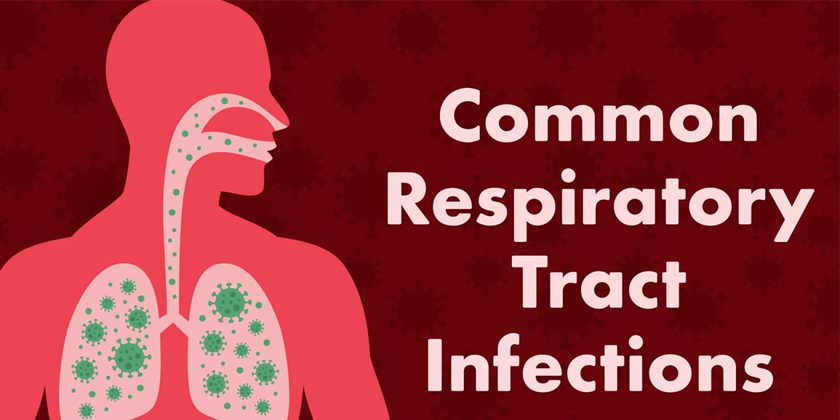The Ultimate Guide to Understanding Common Respiratory Conditions
Understanding Common Respiratory Conditions: Your Ultimate Guide
Why Understanding Respiratory Conditions Matters
Four million people die every year from common respiratory conditions which also create substantial economic and social burdens (Global Burden of Disease). My five years as a public health researcher have involved examining how better respiratory health knowledge leads to fewer hospitalizations and better health outcomes. When individuals learn about their respiratory conditions they acquire the ability to control symptoms and obtain prompt medical treatment.
Key Common Respiratory Conditions
1. Asthma
Asthma presents as a long-term condition which causes both airway inflammation and breathing difficulties.
- Prevalence: Affects 262 million people worldwide (WHO).
- Symptoms: The Mayo Clinic lists wheezing, shortness of breath, chest tightness and coughing as asthma symptoms.
- Triggers: Allergens, pollution, exercise, stress.
- Treatment: Inhalers (bronchodilators, corticosteroids), avoiding triggers (CDC).
2. Chronic Obstructive Pulmonary Disease (COPD)
Chronic Obstructive Pulmonary Disease (COPD) consists of both emphysema and chronic bronchitis which create airflow obstructions.
- Prevalence: The American Lung Association reports 384 million worldwide cases of COPD due to smoking.
- Symptoms: Chronic cough, mucus production, breathlessness (NHLBI).
- Management: Smoking cessation, oxygen therapy, pulmonary rehabilitation.
- Risk Factors: Tobacco, air pollution, occupational exposures.
3. Bronchitis
Bronchitis occurs when the bronchial tubes become inflamed through either acute or chronic conditions.
- Types: The two main types of bronchitis include acute bronchitis which lasts for a short period and is viral-based and chronic bronchitis which persists over the long-term and is often related to COPD according to Cleveland Clinic.
- Symptoms: Cough, mucus, fatigue, chest discomfort.
- Treatment: Mayo Clinic suggests rest and hydration for acute cases while chronic conditions require inhalers and lifestyle adjustments.
- Prevention: Avoid smoking, reduce pollutant exposure.
4. Pneumonia
Pneumonia represents an infection that causes inflammation in the air sacs of the lungs.
- Causes: Bacteria (e.g., Streptococcus pneumoniae), viruses, fungi (CDC).
- Symptoms: People with pneumonia experience fever and chills along with coughing and difficulty breathing which leads to chest pain.
- Treatment: Antibiotics (bacterial), antivirals (viral), supportive care.
- Vaccines: Pneumococcal and flu vaccines reduce risk (WHO).
Causes and Risk Factors
- Environmental: Air pollution, secondhand smoke, occupational hazards (EPA).
- Lifestyle: According to the American Lung Association poor diet combined with smoking and insufficient physical activity are key lifestyle factors.
- Genetic: People who have a family history of asthma and COPD face higher chances of developing these conditions according to the NHLBI.
- Infections: Bronchitis and pneumonia develop when individuals experience viral or bacterial infections according to the CDC.
Prevention and Management Strategies
- Lifestyle Changes: Discontinue smoking use while making exercise a routine part of your life and achieve weight balance according to CDC recommendations.
- Vaccinations: The World Health Organization confirms that flu shots and pneumococcal vaccines along with COVID-19 vaccines maintain respiratory health.
- Air Quality: Use air purifiers, avoid polluted areas (EPA).
- Medical Care: According to Mayo Clinic patients should get regular medical checkups and follow their treatment plans to manage their condition.
Challenges in Managing Respiratory Conditions
- Access to Care: The World Health Organization reports that two billion people do not have sufficient healthcare access for respiratory problems.
- Stigma: Incorrect beliefs about chronic diseases such as COPD lead to late detection of the conditions.
- Climate Impact: According to The Lancet research shows that increasing pollution levels intensify asthma and bronchitis symptoms.
FAQ: Common Respiratory Conditions
What are common respiratory conditions?
Asthma along with COPD and bronchitis and pneumonia represent common respiratory conditions which affect breathing (WHO).
How is asthma treated?
Treatment for asthma involves using inhalers and avoiding triggers according to CDC guidelines.
Can pneumonia be prevented?
Vaccines and hygiene reduce pneumonia risk (WHO).
What causes COPD?
The American Lung Association identifies smoking and pollution as main factors that lead to COPD development.



